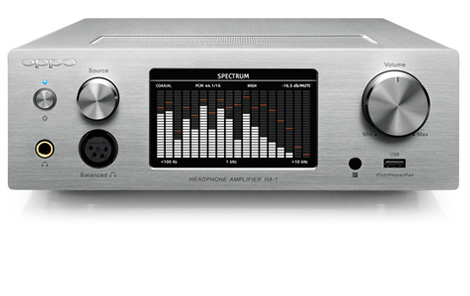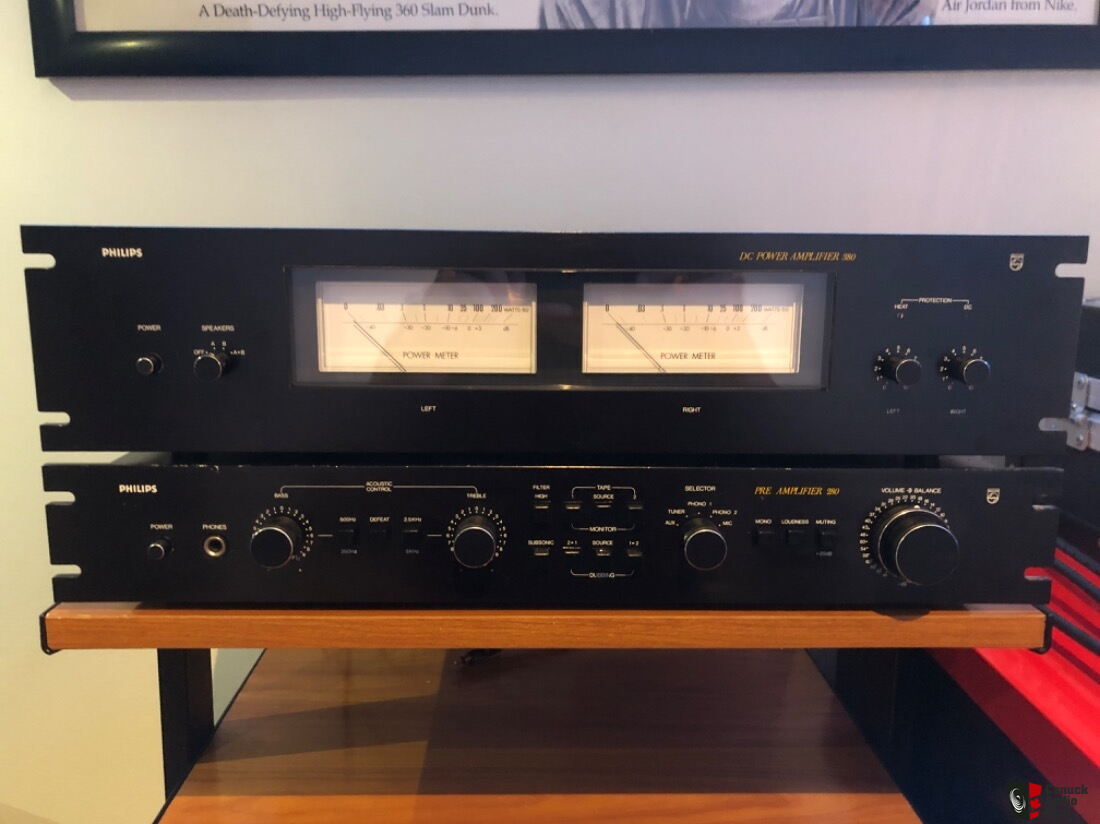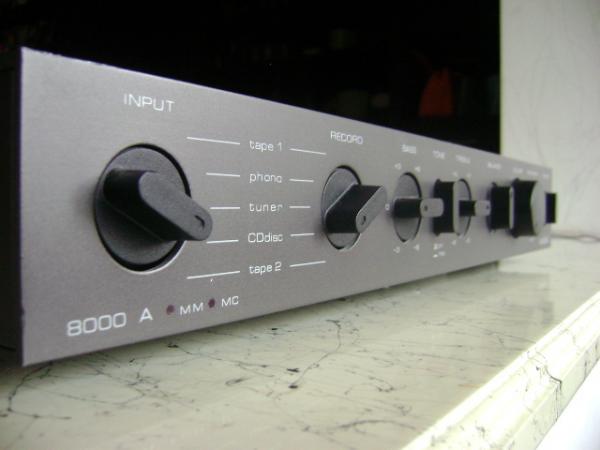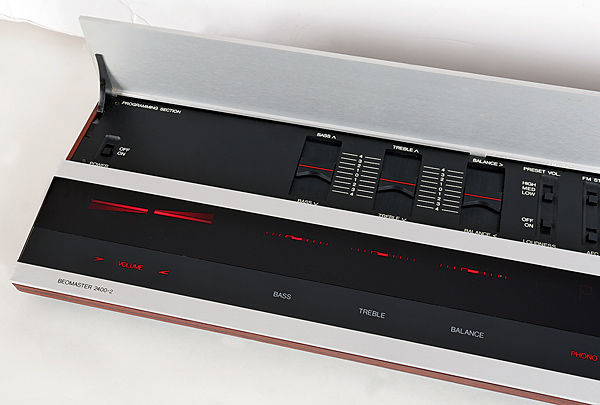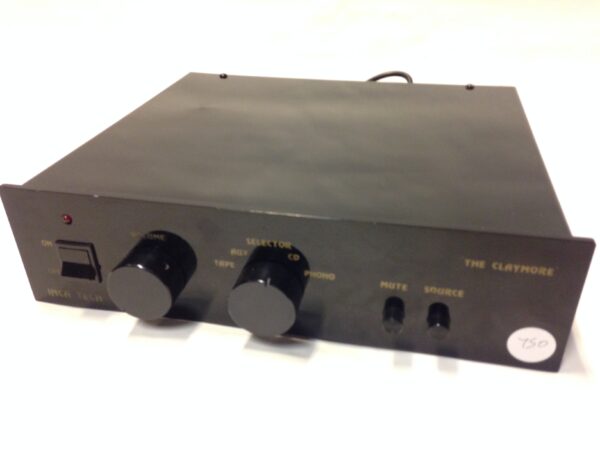Who would have guessed? Oppo Digital Inc., a California-based spin-off of an obscure Chinese optical disc player firm, launches a high-end hi-fi product line. It’s not your normal hi-fi success story, but with each new product launch, the tale becomes more credible. The business now has its own matching DAC/preamp/headphone amp – in the very appealing shape of the HA-1 – less than a year after the superb PM-1 headphones were debuted.
The BDP-95 and 105 Blu-ray players may be recognizable to some. High-end optical disc spinners were championed by Sony and Pioneer ten years ago, but now that honor belongs to Oppo, whose two most recent generations of BD players have been exceptional. The HA-1, like the BDP-105D, pulls a lot of circuitry from it, including the ESS 9018 Sabre32 DAC and digital filter chip. It doubles as a USB DAC, stereo preamp, and Bluetooth audio transmission, despite being marketed as a “high performance headphone amplifier.” In summary, it’s jam-packed with features – to the point where it makes the Audiolab M-DAC, which is admittedly a few hundred pounds cheaper, look like a stripped-down, minimalist relic from the 1980s!
The HA-1’s goal, then, is to deliver a multi-functional digital hub (with analogue input) with an excellent built-in headphone driver stage at a reasonable price. You receive coaxial and optical digital inputs, as well as an AES/EBU balanced digital input through XLR and an asynchronous USB type-B input, in addition to the unbalanced analogue input via RCA phono sockets and the balanced XLR audio input. This allows you to play out 32-bit, 384kHz files instead of ‘only’ 24/192, allowing the Oppo to handle the increasingly popular DXD (24/352.8) format without downsampling. DoP (DSD over PCM) operates at up to four times the standard data rate of DSD (DSD256 @ 11.2896MHz/1-bit in ‘natural’ mode). In short, this device meets a wide range of needs, and I’m not aware of anything else on the market with the similar combination of features and performance at a comparable price. It is currently cutting-edge.
You wouldn’t call the Oppo pricey, given its sub-£1,000 price, wide range of connectivity options, and excellent format compatibility. You could spend £300 on a headphone amp, another £300 on a passive preamp, and another £500 on a DAC and still fall short of the HA-1’s performance. Despite this, the item is well-built both inside and out. Everything is powered by the primary toroidal power transformer, which is generously specified; linear power regulators and filters are powered by bespoke capacitors. Hand-picked and paired discrete components are reported to be used in the power amp section. Surface mount components are used extensively, and all of the circuitry is precisely but densely built out on a single main board.
The half-width casework (254x80x333mm, 5.9kg) is made entirely of aluminium and is of exceptional quality for the price. The 4.3-inch hi-res color screen takes center stage, with a big rotating volume control on the right (through a motorized potentiometer) and a smaller rotary source selector on the left. It offers a variety of display modes, including classic VU meters (for seventies hi-fi kids), a bar-graph spectrum display (for eighties kids), and an information summary (for nineties squares)! If you don’t want to utilize the included remote control, you can download a smartphone app over Bluetooth. The overall quality of the product justifies the price premium over the Audiolab M-DAC. However, one thing to keep in mind is that the Oppo gets quite hot, so don’t put anything on it.
Oppo’s PM-1 planar magnetic headphones are among the clearest, most open, and most detailed sounding headphones at any price. The difficulty is that they aren’t the most enticing things to listen to; they have a forensic nature to them that sets out to tell you everything there is to know about the recording and the source you’re using to replicate it, flaws and all. Because most people’s front ends aren’t perfect, you can get the impression that the PM-1s could use a little extra warmth. Unsurprisingly, the HA-1 delivers exactly that – you wouldn’t call it euphonic, but it’s a fairly neutral sounding device that leans somewhat warm – especially in the low and mid bass regions. In short, it’s a fantastic complement to the Oppo headphones.
I first tried the HA-1 as an analogue preamplifier through its RCA line inputs, where I discovered it has a lot of clarity and insight, as well as a smooth, sophisticated, and reasonably neutral sound quality for its price. You can get a better sound via line in with various all-analogue preamps for this price – the Oppo can sound a touch mechanical and opaque in comparison – but the HA-1 has a lot more capability for the money, so it’s not a fair comparison.
Things start to heat up when you turn on the DAC portion. The Oppo impressed when it was fed by Cyrus CD-Xt Signature transport via its coaxial in. Pacific State by 808 State has a surprising amount of bass weight and a lot of detail. The signature ESS Sabre sound is easily discernible; you get a high-precision rendering of the recording’s numerous complex layers. It’s a direct sound rather than a romantic one, and it’s a seat-of-the-pants listen. This is complemented by the robust bass, which propels the music forward. There was definitely more thump to the bottom drums and Moog bass synthesizer work compared to my reference Chord Hugo DAC.
This finally made sense when I switched from using the HA-1 as a hi-fi preamplifier driving a power amp to using it as a headphone amplifier. Connecting the PM-1 headphones demonstrated how well the unit is suited to driving them. While they are both powerful when used alone, when used together, the combination greatly outperformed the two individual elements. With Malcolm McLaren’s Waltz Darling — a famous eighties tune – they make a very good noise, as you could anticipate. Even though it can sound a little muddy on some systems, Trevor Horn’s production opened out and became a mesmerizing listen. The Oppo duo scythed well through the mix, producing a blisteringly rapid yet rather nuanced interpretation of the song. It conveyed the electronic percussion’s full force, sounding extremely energetic and enjoyable.
Encouraged by my retro sixteen bit experience, I decided it was time to step up the resolution, so a 24/192 REM track was dutifully enlisted, through USB input on my MacBook Pro running Audirvāna. Texarkana is one of those songs that isn’t quite as pristine as it appears at first listen, and only a truly excellent hi-res DAC can bring it to its full grandeur, where it blooms like a flower. The Oppo team pulled everything together in a way that was both believable and pleasant. It was quite good in terms of rhythm, resulting in a forceful and gripping rendering of the song. It performed a good job of mimicking the studio’s recorded acoustic, placing the band a little further back than some other headphone amplifier/DAC combinations, making it less in your face but still highly detailed. I heard that robust, powerful bass driving things along with heady aplomb once more.
The HA-1 is excellent in absolute terms, but it is not invincible. The fulsome bottom end is entertaining, but it’s not quite as lithe as the (slightly more expensive) Chord Hugo’s slightly lighter bass performance. The DAC portion also lacks the Hugo’s remarkable resolution and intelligence, as well as its excellent rhythm and dynamic tracking skills. It’s a good digital converter, but not one of the best. The Oppo, on the other hand, is much better at driving headphones, and not just PM-1s. It has a lot of power and can be set up to drive a wide range of cans from 32 to 600 ohms. It will act without fear or trepidation; it is a formidable performer.
Currently, the HA-1 is the best all-around DAC/preamplifier/headphone stage for the money. It’s difficult to fault because it’s a jack of all trades and a master of none, and it’s a great match for Oppo’s outstanding PM-1 headphones, with which it works hand-in-hand. However, like with any multi-talented product, certain of its abilities are superior to others, and I would rate its ability as a headphone amplifier as exceptional. The majority of its performance can be obtained for £500 from a Musical Fidelity M1HPAP, but not all, in my opinion. It’s a good DAC, but it faces stiff competition from the £600 Audiolab M-DAC, despite the latter’s lack of DSD support. It’s adequate as a preamp, but not remarkable. If you possess the Oppo PM-1, you’d be dumb not to check out the HA-1 – and even if you don’t, it’s worth a try.

